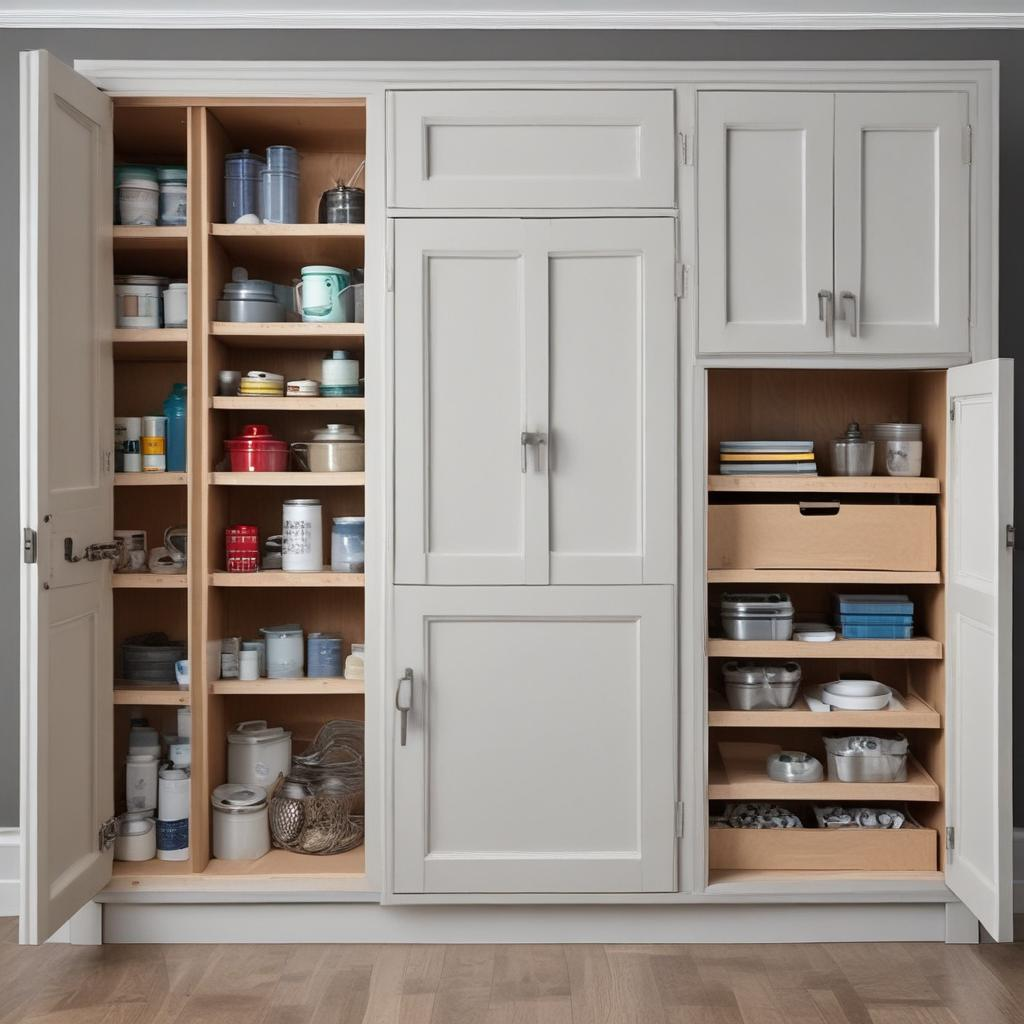A Comprehensive Guide for Buyers
When it comes to selecting the right storage cabinet for your home, office, or industrial environment, the material of the cabinet is just as crucial as its design and size. The material used not only impacts the durability and aesthetic appeal of the cabinet but also its suitability for specific uses and environments. In this comprehensive guide, we will explore the various materials commonly used to make storage cabinets, helping you make an informed decision based on your needs. Here are key points to consider:

1. Wood
- Durability and Style: Wooden storage cabinets are popular for their classic look and structural solidity. Hardwoods like oak, maple, and cherry are especially durable and can handle significant weight, making them ideal for heavy-duty storage.
- Versatility: Wood can be painted, stained, or sealed to match any decor, offering a range of aesthetic options. It’s suitable for living rooms, bedrooms, and offices where appearance is important.
- Considerations: Wooden cabinets can be susceptible to moisture and might not be the best choice for environments such as garages or basements without proper climate control.
2. Metal
- Strength and Durability: Metal storage cabinets, typically made from steel or aluminum, are known for their strength and durability. They are ideal for heavy-duty industrial use or in garages where they can endure harsh conditions.
- Maintenance: Metal cabinets are relatively easy to maintain and are resistant to pests and moisture, which makes them suitable for both indoor and outdoor settings.
- Noise: Metal can be noisy when doors are slammed or items are moved around inside, so they might not be suitable for all indoor environments.
3. Plastic
- Cost-Effectiveness: Plastic cabinets are generally the most affordable option and are lightweight, making them easy to move and reposition.
- Moisture Resistance: Unlike wood, plastic does not absorb moisture, making plastic cabinets a good choice for storage in damp environments or outdoors.
- Variability in Quality: The durability of plastic cabinets can vary greatly depending on the type of plastic used. High-quality plastics like polyethylene or polypropylene are more durable and impact-resistant.
4. Engineered Wood
- Cost Efficiency: Manufactured from composite wood materials such as MDF (Medium Density Fiberboard) or particle board, engineered wood cabinets are less expensive than solid wood but still provide a similar appearance.
- Finishes and Styles: Engineered wood can be finished with veneers or laminates that mimic the look of real wood or other materials, offering a wide variety of stylistic choices.
- Sensitivity to Moisture: Engineered wood is prone to damage from moisture and may warp or swell if exposed to water, so it's less suitable for some environments.
5. Stainless Steel
- Modern Look and Hygiene: Stainless steel offers a sleek, modern look and is naturally resistant to germs and bacteria, making it a popular choice for medical facilities and modern kitchens.
- Corrosion Resistance: It is highly resistant to rust and corrosion, making it ideal for humid or wet environments.
- Cost: Stainless steel cabinets are typically more expensive than other materials, but their durability and longevity may justify the cost for certain uses.
6. Glass
- Aesthetic Appeal: Glass doors on a cabinet can enhance its appearance, making it ideal for displaying decorative items or merchandise.
- Fragility: Glass is fragile and can be prone to breaking if not handled carefully, which may not be suitable for high-traffic areas or settings where children are present.
- Maintenance: Glass requires regular cleaning to maintain its clear, attractive appearance and can show fingerprints and smudges more readily than other materials.
7. Bamboo
- Eco-Friendly: Bamboo is a highly sustainable and eco-friendly material, growing much faster than hardwood trees and requiring fewer resources.
- Aesthetics and Durability: Bamboo offers a unique natural look and is comparable in durability to many traditional hardwoods, making it suitable for a variety of storage needs.
- Cost: While typically more expensive than some other materials like plastic, bamboo can be a cost-effective alternative to hardwoods.
8. Fabric
- Portability and Lightness: Storage cabinets made with fabric usually have a metal frame covered with cloth, which can be disassembled and moved easily.
- Cost-Effective: These types of cabinets are generally inexpensive and good for light storage, such as clothes or toys.
- Less Durable: Fabric is not moisture-resistant and can tear, making it less suitable for long-term or heavy-duty storage.
Choosing the right material for your storage cabinet involves considering the specific needs of your space, the environmental conditions, and your budget. Each material offers distinct advantages and possible drawbacks. Whether you prioritize durability, style, or cost-effectiveness, there is a material that fits your requirements. By understanding these options, you can make an informed decision that ensures you get a storage solution that not only looks good but also serves its purpose effectively over the long term.


.jpg)
.jpg)


.jpg)




.png)





0 Comments